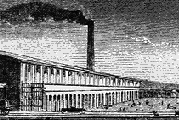|
________________________________________________________ "The so-called "underdeveloped" areas, as compared with the advanced, are underequipped with capital in relation to their population and natural resources. We shall do well to keep in mind, however, that this is by no means the whole story. Economic development has much to do with human endowments, social attitudes, political conditions -- and historical accidents. Capital is a necessary but not a sufficient condition of progress."
________________________________________________________ Contents (1) Introduction Growth theory and development theory may seem like natural bedfellows. As it happens, however, they have had a rather tempestuous relationship over the past forty years. Growth theory focuses on how a nation's output-labor ratio grows. Development theory tries to explain why nations possess very different standards of living and what can be done about them. Of course, "standards of living" is not quite the same as national income per capita. Increasing the latter is not very meaningful if it is very unevenly distributed, does nothing to alleviate mass poverty, exacerbates structural problems or is unsustainable in the longer term. Be that as it may, during the 1950s and early 1960s, the consensus among economists was that development and growth were virtually one and the same thing. The essential difference between a developed nation and an underdeveloped nation, it was felt, was that one had a high income per capita while the other had a lower ratio. In terms of growth models, the process of "development" was identified merely as the attempt by a nation to increase its capital-labor ratio, i.e. to accumulate capital at a faster rate than population, so that its income per capita would "catch up" with the industrialized world. In the 1960s, this view gradually disappeared. The idea that underdeveloped nations were merely pint-sized, antiquated versions of industrialized nations was seen as untenable. Underdeveloped nations in the modern world face many unique challenges and problems which industrialized nations never had to contend with when they were "growing up". For instance, a country trying to develop while, at the same time, integrating itself into an advanced international economic order is something quite unprecedented. As a result, development economists began focusing on the particular experiences of underdeveloped nations on their own terms, with all their peculiar features and structural problems. In recent years, however, the "development-as-growth" perspective has once again emerged to the fore. Today, economists and policy-makers repeatedly appeal to growth theory to explain the differences between the experiences of nations and to guide development policy. Apparently, the theory of choice in most studies is the Solow-Swan growth model (or one of its variants). Given the importance of the policy questions involved, it is worthwhile to spend some time on the implications of Neoclassical growth theory for economic development.
|
All rights reserved, Gonšalo L. Fonseca

